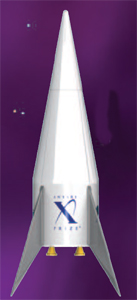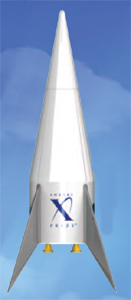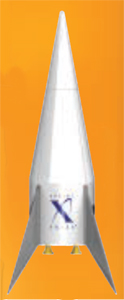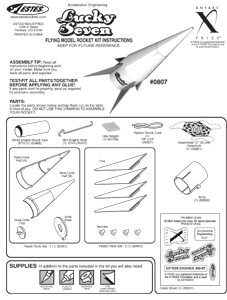Welcome to the SCALE (X-Prize) Lucky Seven Gallery on TRF.
This gallery showcases the X-Prize Lucky Seven and those rockets derived from it. Particularly appropriate in this thread are the following:
Estes: Lucky Seven: #0807
as well as any upscales, downscales, clones, kitbashes or other derivative works. Even Goonies qualify!
American manned spacecraft. Study 2004. X-Prize suborbital ballistic spacecraft concept of Acceleration Engineering, Bath, Michigan.
Lucky Seven was a design of Mickey Badgero of Acceleration Engineering, Bath, Michigan. The concept used rocket-powered vertical takeoff launch and parafoil landing. Lucky Seven was to be a conical rocket 9 meters long and 3 meters between fin tips. For launch and landing, the rocket was to be supported on four fixed leg-fins, each 1.5 m tall. These legs were part of a metal frame that supported the propulsion system, a pressurized cabin, and a nose cone/recovery system. Launching vertically, the main engine, a pressure-fed, liquid oxygen/liquid methane design , was to burn for 90 seconds, after which the rocket was to coast for another 100 seconds past the 100-kilometre altitude mark. Passengers were to experience weightlessness for about three and a half minutes. Upon re-entering the atmosphere, a drogue parachute was to be deployed to slow the ascent. When the air thickened, a parafoil was to be deployed. The spacecraft was to then return to the launch site, using a Global Positioning System satellite guidance system, gliding to a vertical landing.







